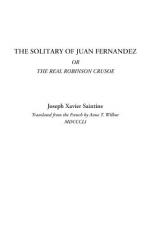Selkirk was one day a witness of the singular facility with which she could supply her wants.
At the morning repast, seeing him use one of his cocoa-nuts which he had fashioned in the form of a cup to drink from; in her instinct of imitation, she had attempted to seize the cup in her turn; a look of reprimand stopped her short in her attempt. Whether she felt a species of humiliation at being forced to quench her thirst in the presence of her master, by going to the banks of the stream and lapping there, like a vulgar animal; or whether the reprimand had painfully affected her, she abstained from drinking and remained for some time quiet and dreamy; but at the following repast, with lifted head and sparkling eye she resumed her place on the stool, provided with a goblet, a goblet belonging to her, lawfully obtained by her, and, with an air of triumph presented it to Selkirk, who, wondering, did not hesitate an instant to share with the monkey the water contained in his gourd.
This goblet was the ligneous and impermeable capsule, the fruit, naturally and deeply hollowed out, of a tree called quatela.[1] It was thus that the intelligent Marimonda, after having borrowed from the numerous vegetables of the island their leaves, to ameliorate her sufferings, to heal her wounds; their fruits for her nourishment and even for her sports, also found means to obtain the divers utensils for house-keeping of which she stood in need.
[Footnote 1: The lecythis quatela, of the family of the lecythidees, created by Professor Richard, and whose singular fruits bear, in Peru as well as in Chili, the denomination of monkey’s goblets.]
Charmed with her gentleness, her docility, the affection she seemed to bear him, Selkirk grew more and more attached to her. Winter, that is, the rainy season which usually lasts in these regions during the months of June and July, was approaching; he suffered in anticipation, from the idea that during this time his gentle companion would not be able to retain her habitual shelter, beneath the foliage of the trees; he conceived the project of giving up to her his grotto, and constructing for himself a new habitation, spacious and commodious. It is thus that our most generous resolutions, whatever we may design to do, encountering in their way personal interest, often turn to the increase of our own private welfare.
At a little distance from the grotto, but farther inland, on the banks of the stream called the Linnet, there was a thicket of verdure shaded by five myrtles of from fifteen to twenty feet in height, and whose stems presented a diameter more than sufficient to insure the solidity of the edifice. Four of these myrtles formed an irregular square; the fifth arose in the midst, or nearly so; but our architect is not very particular. He already sees the principal part of his frame; the myrtles will remain in their places, their roots serving as a foundation.




